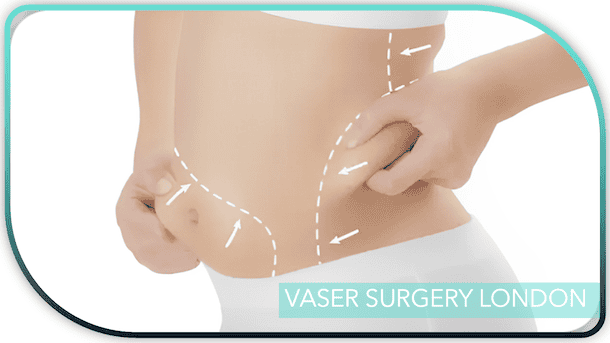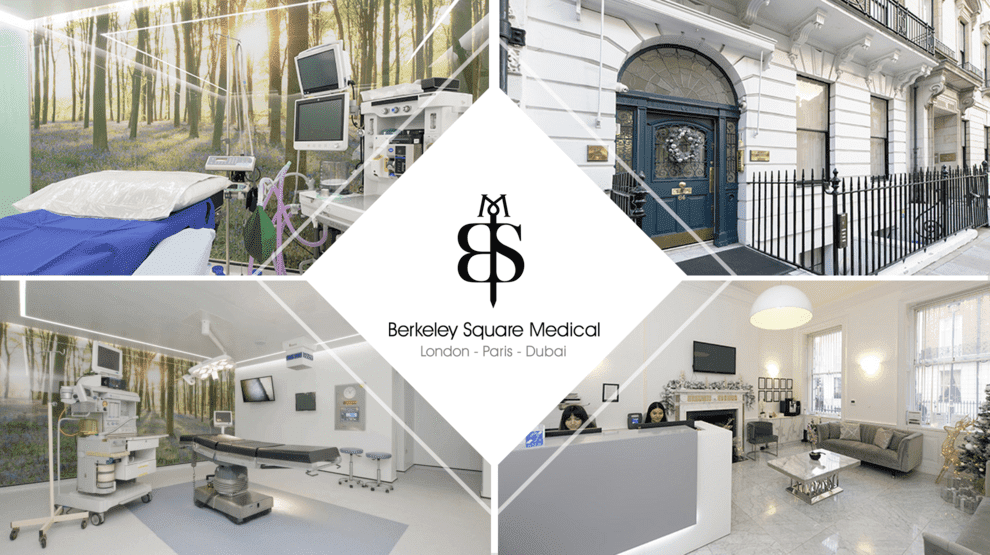At a VASER lipo consultation at Berkeley Square Medical with Mr. Taimur Shoaib, you can expect the following comprehensive process:
-
Initial Assessment:
- Patient Goals: Mr. Shoaib will begin by discussing your aesthetic goals and what you hope to achieve with VASER lipo.
- Medical History: He will review your medical history, including any past surgeries, current medications, and underlying health conditions, to ensure you are a suitable candidate for the procedure.
-
Physical Examination:
- Target Areas: Mr Shoaib will conduct a thorough examination of the areas where you want fat removal.
- Skin and Fat Assessment: He will assess the amount of fat and the elasticity of your skin to determine the best approach for optimal results.
-
Procedure Explanation:
- VASER Technology: Detailed information about how VASER lipo works will be provided. This includes how ultrasound technology is used to break down fat cells before removal.
- Procedure Steps: Mr. Shoaib will explain the steps of the procedure, from the initial incisions to the final fat removal and contouring.
-
Customization:
- Personalized Plan: Based on your goals and his assessment, Mr. Shoaib will create a tailored treatment plan. This plan will specify the exact areas to be treated and the expected results.
- Realistic Expectations: He will set realistic expectations for the outcomes and discuss how VASER lipo can enhance your body contours.
-
Before and After Photos:
- Visual Results: You will be shown before and after photos of previous patients who underwent VASER lipo with Mr. Shoaib. This helps you understand the potential results and effectiveness of the procedure.
-
Cost and Scheduling:
- Procedure Cost: A detailed breakdown of the cost of the procedure will be provided, including any additional fees.
- Scheduling: If you decide to proceed, Mr Shoaib’s team will help you schedule the procedure and any necessary pre-operative appointments.
-
Q&A Session:
- Patient Questions: You will have ample opportunity to ask any questions about the procedure, recovery process, and post-operative care.
- Detailed Answers: Mr Shoaib will provide thorough answers to ensure you are fully informed and comfortable with your decision.
By the end of the consultation, you will have a clear and detailed understanding of the VASER lipo procedure, tailored advice from Mr. Taimur Shoaib, and all the information needed to make an informed decision.
Here’s a detailed explanation of what happens during the surgery:
-
Pre-operative Preparation:
- Second Consultation: Mr. Shoaib see you for your second consultation on the morning of your surgery to re-discuss your aesthetic goals. This will include a separate appointment together with our anaesthetist and nursing in your private room.
- Marking: Mr. Shoaib will mark the target areas on your body where fat removal is planned, ensuring precise treatment.
-
Tumescent Fluid Injection:
- Anaesthesia: Our consultant Anaesthetist will administer General Anaesthetic or Local Anaesthetic with Sedation.
- Solution Injection: A tumescent solution, which contains a mixture of saline, local anaesthetic, and epinephrine, is injected into the targeted areas. This solution helps to numb the area, minimize bleeding, and make the fat easier to break down.
-
Ultrasound Energy Application:
- VASER Probe: A small, thin probe that emits ultrasound waves is inserted through tiny incisions into the fatty tissue.
- Fat Cell Breakdown: The ultrasound energy selectively breaks down fat cells while preserving other tissues such as nerves, blood vessels, and connective tissue.
-
Fat Suction:
- Cannula Insertion: A small cannula (a thin tube) is inserted through the same incisions.
- Fat Removal: The liquefied fat is gently suctioned out through the cannula, effectively contouring the body area. Mr. Shoaib’s precision ensures smooth and even fat removal.
-
Sculpting and Contouring:
- Fine-tuning: Mr. Shoaib will sculpt and contour the treated areas to achieve a more natural and aesthetically pleasing result.
-
Closing Incisions:
- Incision Closure: The small incisions are either left open to drain or closed with sutures. Some surgeons, including Mr. Shoaib, may prefer to leave them open briefly to allow excess fluid to drain, reducing swelling and bruising.
-
Post-operative Care:
- Compression Garments: You will be fitted with compression garments to reduce swelling, support the treated areas, and help your skin conform to the new contours.
- Recovery Instructions: Mr. Shoaib will provide detailed post-operative care instructions, including guidelines on activity restrictions, wound care, and follow-up appointments.
-
Recovery:
- Initial Recovery: Most patients can go home the same day. Initial recovery typically involves some swelling, bruising, and discomfort, which can be managed with prescribed pain medication.
- Long-term Recovery: Swelling may persist for a few weeks, and it’s important to follow Mr. Shoaib’s instructions for optimal healing. Light activities can usually be resumed within a few days, but strenuous exercise should be avoided for a few weeks.
-
Follow-up Visits:
- Monitoring Progress: Follow-up appointments with Mr. Shoaib are scheduled to monitor your healing process and ensure that you are recovering well. He will assess the results and address any concerns.
-
Aftercare and recovery following VASER lipo surgery are crucial for achieving the best results and ensuring a smooth healing process. Here is a step-by-step guide on what to expect and how to care for yourself post-surgery:
Immediate Post-Operative Care
-
Rest and Recuperation:
- First 24 Hours: Rest is essential. Arrange for someone to drive you home and assist you for the first day.
- Compression Garments: Wear the compression garments provided to reduce swelling and help your skin conform to the new contours. Keep these on as directed by your surgeon, usually 24/7 for the first few weeks.
-
Managing Discomfort:
- Pain Medication: Take prescribed pain medication as directed to manage any discomfort.
- Ice Packs: Apply ice packs to the treated areas for 10-15 minutes at a time to help reduce swelling and bruising.
First Few Days Post-Surgery
-
Activity Level:
- Light Activity: Begin light walking as soon as possible to promote blood circulation and reduce the risk of blood clots.
- Avoid Strenuous Activities: Refrain from strenuous activities, heavy lifting, and vigorous exercise.
-
Wound Care:
- Incision Care: Keep the incisions clean and dry. Follow your surgeon’s instructions on changing dressings and caring for the wounds.
- Showering: You may be allowed to shower within a day or two. Pat the incision areas dry gently afterward.
First Week Post-Surgery
-
Monitoring for Complications:
- Signs of Infection: Watch for signs of infection such as increased redness, swelling, warmth, or discharge from the incision sites, and contact your surgeon if these occur.
- Follow-up Appointments: Attend all scheduled follow-up appointments with Mr. Shoaib to monitor your progress.
-
Diet and Hydration:
- Healthy Diet: Maintain a balanced diet to support healing. Avoid foods high in sodium to reduce swelling.
- Hydration: Drink plenty of water to stay hydrated.
Weeks 2-4 Post-Surgery
-
Gradual Increase in Activity:
- Light Exercise: Gradually increase your activity level. Gentle exercise such as walking is encouraged.
- Avoid High-Impact Activities: Continue to avoid high-impact exercises and activities that put strain on the treated areas.
-
Compression Garments:
- Continued Use: Continue wearing compression garments as advised, typically for at least 4-6 weeks, to help reduce swelling and improve skin retraction.
Long-Term Recovery (1-3 Months)
-
Resuming Normal Activities:
- Gradual Return: Slowly return to your regular exercise routine as approved by your surgeon.
- Final Results: Full results may take several months to become visible as swelling continues to subside and the body adjusts.
-
Skin Care:
- Moisturize: Use recommended moisturizers to keep your skin hydrated and improve elasticity.
- Massage: Gentle massages of the treated areas may be recommended to help reduce swelling and improve contouring.
Ongoing Care
- Healthy Lifestyle:
- Maintain Results: Maintain a healthy lifestyle with a balanced diet and regular exercise to preserve the results of your VASER lipo surgery.
- Regular Check-Ups: Keep in touch with Mr. Shoaib for any concerns or follow-up evaluations to ensure long-term satisfaction with your results.
By following these detailed aftercare and recovery steps, you can optimize your healing process and achieve the best possible outcome from your VASER lipo surgery with Mr. Taimur Shoaib.
VASER lipo surgery, like any surgical procedure, carries certain risks. Here are the common risks associated with VASER lipo and how each risk can be minimised:
1. Infection
Infection can occur at the incision sites or internally where the fat was removed.
How do we minimise this risk:
- Sterile Techniques: Surgeons use sterile techniques and environments to reduce the risk of infection.
- Antibiotics: Prophylactic antibiotics may be prescribed before and after surgery.
- Post-operative Care: Following proper wound care instructions and keeping incisions clean and dry helps prevent infection.
2. Bleeding and Hematoma
Excessive bleeding can occur during or after surgery, and hematomas (collections of blood under the skin) may form.
How do we minimise this risk:
- Pre-operative Evaluation: Careful assessment of the patient’s medical history and medications to avoid those that increase bleeding risk.
- Tumescent Solution: The use of tumescent solution helps minimize bleeding by constricting blood vessels.
- Post-operative Monitoring: Close monitoring of the patient during the initial recovery phase.
3. Seroma
Accumulation of fluid in the treated area.
How do we minimise this risk:
- Drain Placement: Sometimes drains are placed to allow excess fluid to escape.
- Compression Garments: Wearing compression garments as directed helps reduce fluid buildup.
- Aspiration: In some cases, excess fluid may be aspirated with a needle.
4. Numbness or Changes in Sensation
Temporary or permanent changes in skin sensation, including numbness or hypersensitivity.
How do we minimise this risk:
- Careful Technique: Surgeons use precise techniques to minimize nerve damage.
- Patient Education: Informing patients that some numbness is normal and usually resolves over time.
5. Scarring
Scarring can occur at incision sites.
How do we minimise this risk:
- Small Incisions: VASER lipo requires only small incisions, which typically result in minimal scarring.
- Scar Care: Proper post-operative care, including the use of scar-reducing creams and protecting scars from sun exposure.
6. Uneven Contours or Asymmetry
Uneven fat removal can lead to asymmetry or irregular contours.
How do we minimise this risk:
- Experienced Surgeon: Choosing a skilled and experienced surgeon like Mr. Taimur Shoaib reduces this risk.
- Precise Technique: Using VASER technology allows for more precise fat removal.
- Follow-up Treatments: In some cases, touch-up procedures may be performed to correct minor irregularities.
7. Skin Laxity
Loose or sagging skin after fat removal.
How do we minimise this risk:
- Assessment of Skin Elasticity: Evaluating the patient’s skin elasticity before surgery to set realistic expectations.
- Compression Garments: Wearing compression garments helps the skin conform to new contours.
- Combination Treatments: Combining VASER lipo with skin-tightening treatments if necessary.
8. Anaesthesia Risks
Complications related to anaesthesia, such as allergic reactions or respiratory issues.
How do we minimise this risk:
- Anaesthesia Evaluation: Thorough pre-operative evaluation by our Consultation Anaesthetist.
- Monitoring: Continuous monitoring of vital signs during surgery.
9. Blood Clots
Formation of blood clots, particularly in the legs (deep vein thrombosis).
How do we minimise this risk:
- Early Mobilisation: Encouraging patients to move around as soon as possible after surgery.
- Compression Stockings: Use of compression stockings to improve circulation.
- Hydration: Maintaining proper hydration levels.
10. Skin Discoloration
Temporary or permanent changes in skin colour.
How do we minimise this risk:
- Gentle Technique: Using gentle techniques to minimize trauma to the skin.
- Post-operative Care: Proper aftercare, including avoiding sun exposure.








